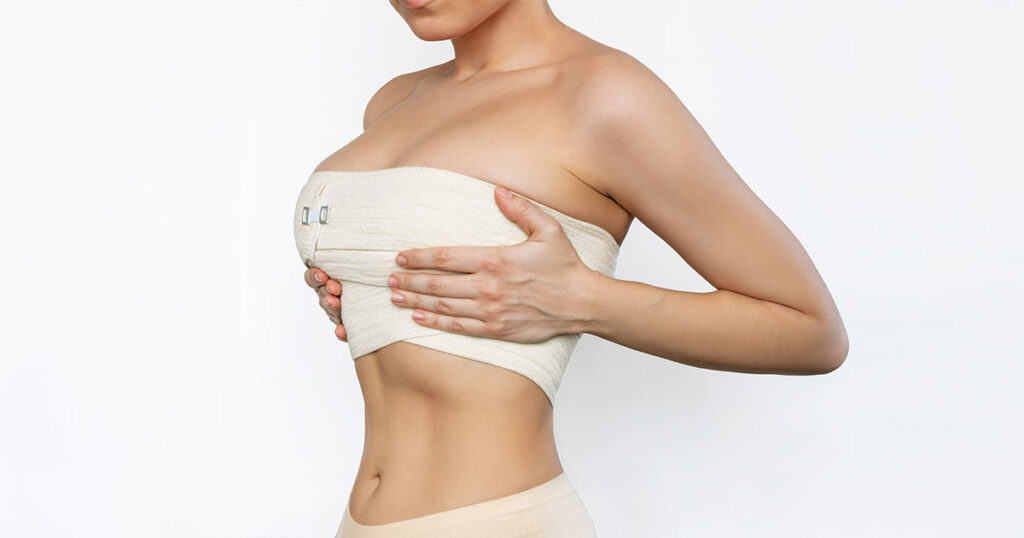Home / Surgical Procedures / Breast Procedures / Breast Augmentation / Swelling After Breast Augmentation

Let’s pretend that you and your neighbor each have your own army. One day your neighbor gets angry, cuts a hole in your fence, and threatens to send his army into your yard. You’re going to send your army to the fence so you can defend yourself and repair your fence, right? Well, your body does the same thing after an invasive surgery like breast augmentation, and the result is swelling.
After surgery, your body responds to the trauma by sending extra blood and white blood cells to the area to repair the damage and defend against bacteria and other potential invaders. This causes the area to swell. The swelling is routine, and it would be more concerning if you didn’t swell after surgery. That being said, there is normal swelling and abnormal swelling that can be cause for concern—you’ll need to recognize both so you know whether to seek medical attention.
One of the ways to differentiate between normal and problematic swelling is duration. Swelling typically peaks about 72 hours after surgery and then gradually improves. Swelling that lasts too long or gets worse rather than better may indicate a complication. Although there is no exact timeline that matches everyone’s recovery perfectly, the following overview provides a good idea of what you can expect:
How much you swell after breast augmentation surgery is impacted by several different variables. These include:
After a breast augmentation, it's no surprise that swelling is most prominent in the breasts. The incision line, upper breast, and underarm area typically swell the most. Fluid commonly accumulates in the sides of the chest as well, which often surprises patients. Swelling here can make your breasts look too wide or asymmetrical, but this effect goes away as the swelling does. Abdominal swelling is also common and may be temporarily exacerbated by post-op medications.
Although swelling is normal after breast augmentation surgery, it’s also uncomfortable. Reducing the swelling can improve your comfort during recovery, so we recommend the following:
Some swelling after a breast augmentation is normal, but in rare cases swelling can indicate a problem. Sudden, severe swelling in one breast may indicate a hematoma (a collection of blood) or seroma (a collection of clear fluid). Any swelling that is accompanied by redness, a warm sensation to the touch, or pus-like drainage may indicate infection. It’s important to contact your plastic surgeon if you experience these symptoms or notice hard lumps under your skin. Remember too that swelling should slowly improve. If yours takes a step backward and gets worse, reach out to your doctor.
Swelling is normal and expected after breast augmentation, peaking in the first few days and gradually improving over six to eight weeks. Factors like procedure type, activity level, and garment usage affect the duration of swelling. Staying elevated, hydrated, and wearing a compression bra are key to minimizing swelling. Patients are encouraged to contact their plastic surgeon for personalized advice on post-op swelling management and any other concerns that arise during breast augmentation recovery.
Abdominal swelling is common due to fluid retention and anesthesia effects but typically resolves within two to four weeks.
To reduce swelling, wear a surgical bra, sleep in a slightly elevated position, stay hydrated, skip salty foods, and avoid strenuous activity.
Yes, submuscular implants often cause more swelling initially due to muscle disruption.
Eat low-sodium, high-water-content foods like cucumber, watermelon, and leafy greens.
Contact your surgeon if you experience sudden swelling, redness, or severe pain, as these issues may indicate a complication.
